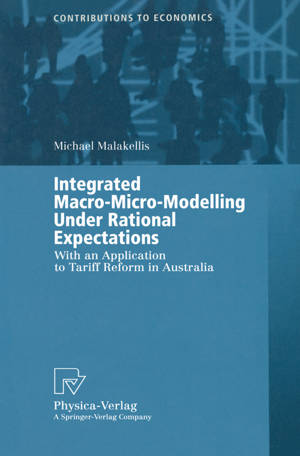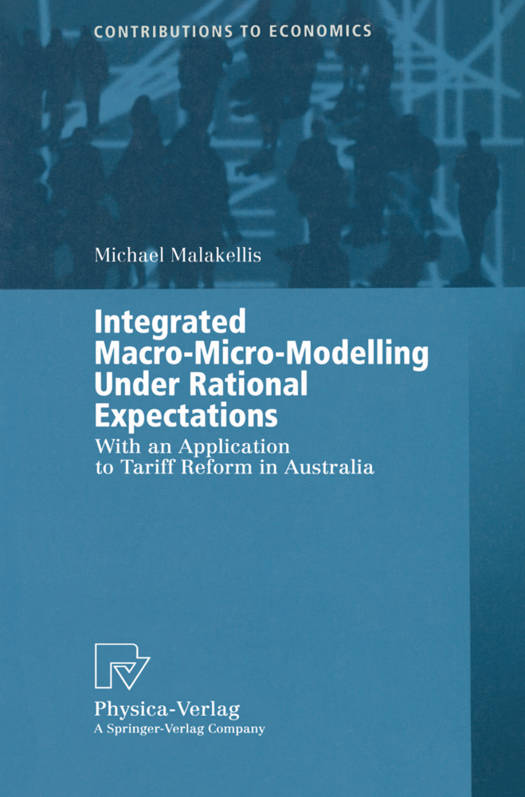
Door een staking bij bpost kan je online bestelling op dit moment iets langer onderweg zijn dan voorzien. Dringend iets nodig? Onze winkels ontvangen jou met open armen!
- Afhalen na 1 uur in een winkel met voorraad
- Gratis thuislevering in België vanaf € 30
- Ruim aanbod met 7 miljoen producten
Door een staking bij bpost kan je online bestelling op dit moment iets langer onderweg zijn dan voorzien. Dringend iets nodig? Onze winkels ontvangen jou met open armen!
- Afhalen na 1 uur in een winkel met voorraad
- Gratis thuislevering in België vanaf € 30
- Ruim aanbod met 7 miljoen producten
Zoeken
Integrated Macro-Micro-Modelling Under Rational Expectations
With an Application to Tariff Reform in Australia
Michael Malakellis
€ 52,95
+ 105 punten
Omschrijving
This monograph is concerned with the formulation and implementation of ORANI-INT, an intertemporal Computable General Equilibrium (CGE) model of the Australian economy. The aim is to bring together, in a balanced approach, theory and data for the purpose of developing a practical state-of-the-art tool for policy analysis. The modelling approach adopted is motivated by the recent trend in economy-wide modelling to combine the respective strengths of traditional CGE models and modern macroeconomic models. Traditional CGE models typically provide a dissagregate representation of the economy at a single point in time. Such models are useful for analysing issues involving the allocation of resources among the various agents identified at a particular point in time. Modern macroeconomic models, on the other hand, usually provide an aggregate representation of the economy over many points in time. Such models are useful for analysing issues involving the allocation of resources across time. A model that combines the strengths of static CGE models and modern macro-dynamic models is amenable to addressing a wide range of policy issues. To demonstrate this point ORANI-INT is used to analyse tariff reform.
Specificaties
Betrokkenen
- Auteur(s):
- Uitgeverij:
Inhoud
- Aantal bladzijden:
- 280
- Taal:
- Engels
- Reeks:
Eigenschappen
- Productcode (EAN):
- 9783790812749
- Verschijningsdatum:
- 17/02/2000
- Uitvoering:
- Paperback
- Formaat:
- Trade paperback (VS)
- Afmetingen:
- 156 mm x 234 mm
- Gewicht:
- 421 g

Alleen bij Standaard Boekhandel
+ 105 punten op je klantenkaart van Standaard Boekhandel
Beoordelingen
We publiceren alleen reviews die voldoen aan de voorwaarden voor reviews. Bekijk onze voorwaarden voor reviews.











